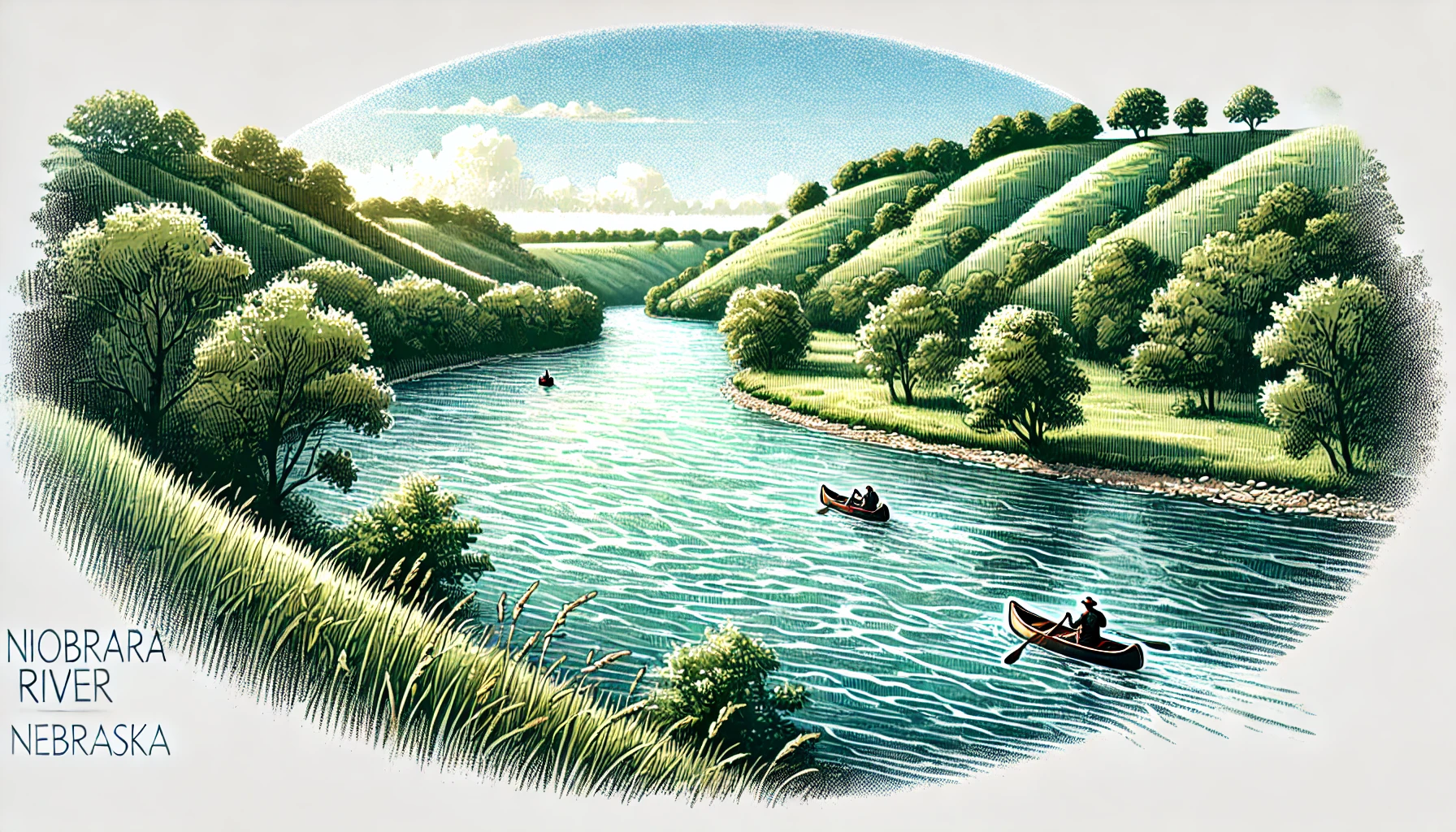Traveling Through Nebraska: Sandhills Wildlife Refuge

Located in central Nebraska, the Sandhills Wildlife Refuge is a protected area that spans over 28,000 acres of rolling hills and prairie wetlands. As part of the National Wildlife Refuge System, it was established in 1964 to conserve and manage fish, wildlife, and plant resources for the benefit of the public. The refuge is managed by the United States Fish and Wildlife Service and is a popular destination for outdoor enthusiasts, birdwatchers, and nature lovers alike.
One of the unique features of the Sandhills Wildlife Refuge is its diverse landscape, which supports a wide variety of plant and animal species. The refuge is home to over 200 species of birds, including the endangered Whooping Crane, which migrates through the area each spring and fall. The refuge also supports a large population of waterfowl, including Mallards, Blue-winged Teal, and American Coots. In addition to its avian inhabitants, the refuge is also home to a variety of terrestrial animals, including White-tailed deer, Bobcats, and Coyotes.
The Sandhills Wildlife Refuge is also home to a number of rare and threatened plant species. The refuge's dry sandy hills and wetlands support a variety of unique plant communities, including the federally listed Blowout Penstemon and the state-listed Sandhills Sunflower. These plant species are adapted to the harsh conditions of the Sandhills, where frequent fires and strong winds have shaped the landscape over thousands of years.
Visitors to the refuge can explore a variety of hiking trails and scenic drives, including the 4.5-mile Sandhills Driving Tour Loop. This loop takes visitors through some of the refuge's most unique habitats, including the Rollie Hill Prairie and the Marsh Duck Wetlands. The refuge also offers a variety of educational programs and events, including guided birding tours and wildlife photography classes. For those interested in learning more about the refuge's natural and cultural history, the refuge's visitor center offers a range of exhibits and educational materials.
One of the most notable features of the Sandhills Wildlife Refuge is its cultural significance. The refuge is home to a number of archaeological sites, including the Dry Creek archaeological site, which dates back over 10,000 years. The site contains a range of artifacts, including stone tools and ceramics, which provide insight into the lives of the region's earliest inhabitants. The refuge also contains a number of historical sites, including the 19th-century homestead of the Fitch family, which was established in 1875.
In terms of conservation efforts, the Sandhills Wildlife Refuge is actively involved in a number of projects aimed at protecting and restoring the area's natural habitat. The refuge has implemented a number of measures to control invasive species, including the removal of noxious weeds and the use of prescribed burns to maintain the health of the native plant communities. The refuge is also working to restore habitat for a number of threatened and endangered species, including the Whooping Crane and the Peregrine Falcon.
In addition to its conservation efforts, the Sandhills Wildlife Refuge also provides a range of recreational opportunities, including hunting and fishing. The refuge is open to hunting during the fall and winter months, and visitors can hunt for a variety of species, including deer, turkey, and waterfowl. The refuge also offers a limited number of fishing permits for the refuge's lakes and ponds, where anglers can fish for species such as Largemouth Bass and Channel Catfish.
Overall, the Sandhills Wildlife Refuge is a unique and fascinating destination that offers a range of opportunities for outdoor enthusiasts and nature lovers. Its diverse landscape, unique plant and animal species, and cultural significance make it a must-visit destination for anyone interested in exploring the natural beauty of Nebraska.
One of the unique features of the Sandhills Wildlife Refuge is its diverse landscape, which supports a wide variety of plant and animal species. The refuge is home to over 200 species of birds, including the endangered Whooping Crane, which migrates through the area each spring and fall. The refuge also supports a large population of waterfowl, including Mallards, Blue-winged Teal, and American Coots. In addition to its avian inhabitants, the refuge is also home to a variety of terrestrial animals, including White-tailed deer, Bobcats, and Coyotes.
The Sandhills Wildlife Refuge is also home to a number of rare and threatened plant species. The refuge's dry sandy hills and wetlands support a variety of unique plant communities, including the federally listed Blowout Penstemon and the state-listed Sandhills Sunflower. These plant species are adapted to the harsh conditions of the Sandhills, where frequent fires and strong winds have shaped the landscape over thousands of years.
Visitors to the refuge can explore a variety of hiking trails and scenic drives, including the 4.5-mile Sandhills Driving Tour Loop. This loop takes visitors through some of the refuge's most unique habitats, including the Rollie Hill Prairie and the Marsh Duck Wetlands. The refuge also offers a variety of educational programs and events, including guided birding tours and wildlife photography classes. For those interested in learning more about the refuge's natural and cultural history, the refuge's visitor center offers a range of exhibits and educational materials.
One of the most notable features of the Sandhills Wildlife Refuge is its cultural significance. The refuge is home to a number of archaeological sites, including the Dry Creek archaeological site, which dates back over 10,000 years. The site contains a range of artifacts, including stone tools and ceramics, which provide insight into the lives of the region's earliest inhabitants. The refuge also contains a number of historical sites, including the 19th-century homestead of the Fitch family, which was established in 1875.
In terms of conservation efforts, the Sandhills Wildlife Refuge is actively involved in a number of projects aimed at protecting and restoring the area's natural habitat. The refuge has implemented a number of measures to control invasive species, including the removal of noxious weeds and the use of prescribed burns to maintain the health of the native plant communities. The refuge is also working to restore habitat for a number of threatened and endangered species, including the Whooping Crane and the Peregrine Falcon.
In addition to its conservation efforts, the Sandhills Wildlife Refuge also provides a range of recreational opportunities, including hunting and fishing. The refuge is open to hunting during the fall and winter months, and visitors can hunt for a variety of species, including deer, turkey, and waterfowl. The refuge also offers a limited number of fishing permits for the refuge's lakes and ponds, where anglers can fish for species such as Largemouth Bass and Channel Catfish.
Overall, the Sandhills Wildlife Refuge is a unique and fascinating destination that offers a range of opportunities for outdoor enthusiasts and nature lovers. Its diverse landscape, unique plant and animal species, and cultural significance make it a must-visit destination for anyone interested in exploring the natural beauty of Nebraska.
